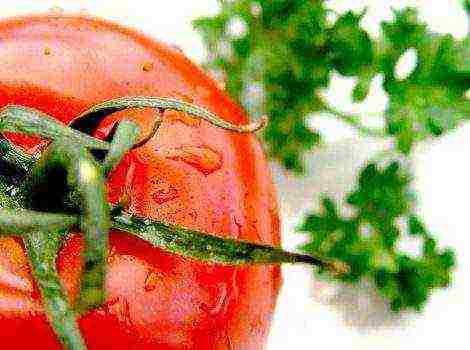Content
- 1 Description of katran
- 2 Katran varieties
- 3 Sowing katran
- 4 Katran: leaving
- 5 Growing horseradish katran - tips reviews and recommendations
- 6 Katran: landing and care - video
- 7 Description of the horseradish katran plant: what it looks like - in the photo
- 8 Tatar horseradish katran
- 9 How to grow a katran flower
- 10 Stratification of katran seeds
- 11 Growing katran from seeds: planting and care
- 12 Planting katran seeds and caring for crops
- 13 How to plant katran herb from cuttings
- 14 Forcing katran
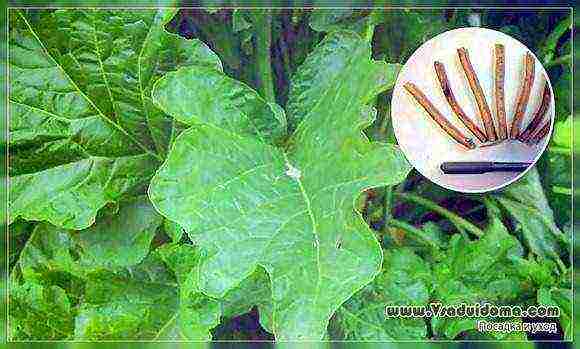
Our family is very fond of horseradish, we use it both in cooking and for improving the body. Naturally, at one time they planted a whole bed of this plant. But something unimaginable began: the horse-radish began to conquer new territories. In general, we are disappointed in this plant, and now we are trying in every possible way to expel it from the site. But we are interested in something else: maybe there are more "peaceful" plants - horseradish analogues? Igor Antonovich OSKIN, Pskov
There is a close relative of horseradish that can be a good substitute for it. This is katran. Their similarity is so great that many manufacturers use precisely its roots as raw materials for the "Table horseradish" product.
Description of katran
Katran is a perennial herb with a taproot succulent and brittle root. It goes to a great depth, which contributes to high winter hardiness - in the presence of snow cover, the plant is able to withstand 40-degree frosts. The length of the root reaches 35, the diameter is up to 7 cm, and the weight sometimes exceeds 1 kg.
Plants three years old and older develop flowering shoots with white flowers. The fruit is a non-expanding pod, inside which is a seed, similar to a cabbage.
On a note
An interesting feature of katran is that its vegetative mass contains a natural growth stimulant, and if the aisles of vegetable crops are mulched with katran leaves, then their rapid growth is noted.
See also: Katran (photo) types and planting in a flower garden for decorative purposes
Location, crop rotation and soil
Despite the unpretentiousness, in order to obtain high and high-quality yields, it is necessary to allocate for katran smooth, fertile areas with highly cultivated neutral soil of light and medium granulometric composition with good water and air properties. Katran does not tolerate the close standing of groundwater, low-lying, swampy areas, and saline soils are not to his liking.
In the first year, the plant needs high soil moisture, but in the future, when a powerful root system develops, this factor becomes insignificant.
The place where the katran will be cultivated for at least two years and at least five years should be well lit, protected from the winds and free from perennial weeds. The best predecessor is potatoes, under which increased doses of organic fertilizers were applied. It is good to sow katran after tomatoes, cucumbers, herbs, annual legumes. The worst predecessors are plants of the same cabbage family.
Tillage includes the obligatory deep digging, and even better - the formation of raised ridges. In early spring, harrow should be carried out to close the moisture and level the soil, and repeat this operation immediately before sowing.
The main dressing should be added (per 1 m2) 3-5 kg of humus, 20-25 g of potash, 10-15 g of phosphorus fertilizers, which contribute to the active development of the root system. Immediately before sowing, 5 g of phosphorus and 10 g of nitrogen fertilizers are scattered. If the soil on the site is acidic, it is neutralized with dolomite flour or wood ash - 1-2 kg per 1 m2.In the latter case, you can refuse to add phosphorus and potassium.
Katran varieties
Chord. The root crop is cylindrical, straight, smooth, weighing 150-250 g. The flesh is white, dense. The yield of root crops is 1.2-1.8 kg / m2.
Crimean. Cylindrical root crop weighing 500-600 g. White pulp with cream honey, dense. The yield of root crops is -1-1.6 kg / m2.
Sowing katran
The optimal time for sowing katran in autumn coincides with the sowing of winter grain crops (late September - early October). During the winter period, natural seed stratification occurs.
This operation must be carried out in advance during spring sowing, which is more preferable, as it avoids the winter whims of nature. To do this, in the fall, the seeds are soaked for two days.
in water with a temperature of 20 degrees, then mixed with sifted wet sand in a ratio of 1: 4, poured into wooden boxes lined with foil, and buried for the whole winter in the ground to a depth of 20 cm.You can stratify in a refrigerator freezer - it will take 100 days ...
Sowing is carried out in the middle or at the end of April. Before that, the seeds must be cleaned of sand, warmed up in water with a temperature of 40-50 degrees to obtain friendly shoots and prevent powdery mildew, dry and, after checking for germination, sow in a wide-row method according to the scheme 70 × 40 and 90 × 30 cm to a depth of no more 1.5 cm.
On a note
You can propagate katran and planting cuttings, which are harvested in the fall. Sections of annual lateral roots with a diameter of 0.5-1 and a length of 10-55 cm are used. 4-6 cuttings are obtained from one plant. Planting is carried out in the same autumn into the ridges to such a depth that the top of the cutting is deepened by 4-5 cm.When planting, the row spacing of 70-80 cm and the interval between plants are observed - 20-25 cm.
Katran: leaving
Caring for a katran in the first year is mainly reduced to regular (3-5 times per season) loosening of row spacings. The first time this is done in 10-15 days to destroy the soil crust, then with 5-6 true leaves, thinning and loosening are carried out not only between the rows, but also the soil around the plant.
It is best to feed the katran with a diluted mullein. You can use wood ash, which is also a good means of fighting cabbage fleas, which can damage plants.
Irrigation must be carried out with insufficient soil moisture -4-5 times per season with the obligatory loosening of the soil. When using a mulch layer, the number of waterings is reduced.
Caring for the katran in the second and subsequent years is supplemented by harrowing the site and removing old leaves.
Cleaning
You can start harvesting in the fall of the first year, when the length of the root crop reaches 15-20 cm, and its weight is 250-300 g. But it is best to leave the katran to grow in the second year.
The leaves of the plants are cut off and, digging with a pitchfork, the rhizomes are pulled out. At the same time, there is no need to choose, as when harvesting horseradish, even the smallest roots. Katran, having started to grow, will fade and this will end its life cycle. It is this property that allows you to grow it in the garden without fear of clogging due to uncontrolled plant growth.
See also: Horseradish katran - growing
Getting your katran seeds
Well-developed roots with a length of 25-30 cm are used as testes. They are planted in the ground at an angle in high, well-fertilized ridges according to the scheme 60 × 60 cm. They are sprinkled with earth by 2-3 cm and the soil is compacted. Care is the same as when growing katran on rhizomes. The flowering period of the katran is extended, and therefore it will not work to wait for all the seeds to ripen - you can simply lose them all in strong wind or rain. Therefore, they start harvesting when 70% of the pods are brown. They are dried and threshed in a well-ventilated area. Seeds are stored in tight bags, protected from direct sunlight. They retain their germination capacity for up to three years.
Storage
Due to its bactericidal properties, the roots of katran can be stored for a long time in a basement or cellar.The best way: pour 3-5 cm of sand on the bottom of the wooden box, lay the rhizomes so that they do not touch each other, then a layer of sand and again rhizomes, and so on to the top. However, with this method of storage, it is important to monitor the moisture content - with a high rhizomes they can rot, and with a low katran itself it will lose moisture and dry out.
Growing horseradish katran - tips reviews and recommendations
“Our family is very fond of horseradish root spices: this is the best addition to jellied meat, and the leaves are an indispensable ingredient for winter cooking. From specialized literature and the Internet I learned that if you plant horseradish in the garden, it will not be possible to remove it. They say that every year he will capture more and more new areas of the garden. I appeal to experienced gardeners and responsive editorial staff, make it clear whether this is really so. "
Emilia Szabo
Ideal alternative
Really. having settled on a plot of land, horseradish will flatly refuse to leave it, even if over time you decide to get rid of this plant. Therefore, before acquiring such a vegetable, it is imperative to take into account all the consequences of its cultivation.
But if you cannot imagine your life without "thrill", we suggest replacing horseradish with katran. It blooms very beautifully, is much more productive, tastier and juicier than horseradish, and at the same time does not clog the site. That is, a stubborn long-term struggle, to which "naughty" horse-radish dooms you, with a katran you can not be afraid.
Katran is a tall, highly branching perennial plant of the Cabbage (Cruciferous) family. Reaches its bloom three years after planting. In the second year, the katran forms a powerful thick root that goes into the soil to a depth of more than 2 m, which allows it to extract water from deep horizons.
The katran plant is drought-resistant, light-demanding, does not tolerate shading well, especially in the initial phases of growth and development. Katran is frost-resistant, its seeds begin to germinate at a temperature of 3-4 ° C, the seedlings can withstand frosts down to -5 ° C.
The site for katran should be with a deep arable layer and moist sandy loam or loamy soil, well permeable to water and roots. Since autumn, deep autumn plowing (up to 30-40 cm) is carried out on the bed under the katran. In early spring, the garden is harrowed. make compost or rotted manure and plow.
Seeds of katran are sown in early spring or before winter. With early spring sowing, 90-100 days of stratification of seeds, pre-soaked in warm (18-20 ° C) water, is carried out. The distance between plants in a row is 30-50 cm, between rows - 50-70 cm. Before and after sowing, soil is rolled up.
In the first year of life, caring for a katran consists in combating weeds, loosening row spacings and thinning crops in the phase of the second true leaf. The distance between plants in a row should be 20-25 cm
Katran looks very decorative and does not litter the area in an annual culture and 30-35 cm in a biennial one. In the autumn of the second year, technical ripeness begins at the rhizomes. The roots are harvested in October, digging them with shovels to a depth of 50 cm.
To prepare seedlings, the roots are sorted by size, put in boxes, sprinkled with sand and sent to storage in the cellar. They are stored at a temperature of 2 ° ..- 2 ° C and a relative air humidity of 85-90%.
Katran: landing and care - video
Katran planting cultivation and care
Below are other entries on the topic "Cottage and garden - do it yourself"
Growing horseradish - Katran variety: Horseradish variety Katran If you heard ... Katran (photo) types and planting in a flower garden for decorative purposes: Katran - planting and care, ... Horseradish Katran - growing: How to grow horseradish variety Katran Horseradish, ... Growing horseradish - tips and recommendations: How to grow horseradish and not ... An interesting way of growing horseradish: In order not to have to get rid of ... Variegated horseradish - growing: Variegated or marbled horseradish We have ... Growing radish and its counterparts - turnip turnip katrana: Radish and other root crops - ...
The katran plant in some regions grows as a weed, and in other areas it is not possible to grow even with very competent care. This feature of the grass has long been noticed by gardeners. Therefore, the cultivation of the katran plant is often practiced in certain areas. Territory limitation is also necessary due to the rapid spread of the root system. If the growing conditions on the personal plot turn out to be suitable for the reproduction of this grass, then after a few months it will literally fill the whole garden with itself. How horseradish katran is grown in open field conditions is described in the proposed material. It also provides basic information about the types of crops available for cultivation in a regular garden.
Description of the horseradish katran plant: what it looks like - in the photo
Starting the description of katran, it is worth noting that this vegetable is little known to the inhabitants of the black earth region. It is found in the wild in the foothills of the Crimea and the Caucasus. However, this unpretentious plant does not differ from horseradish in taste and is successfully cultivated in different soil and climatic zones. It grows well in the Urals and Siberia. Residents of these regions know exactly what a katran looks like and where to find it in the nearest forest or in their garden.
Horseradish katran belongs to the Cruciferous family. In Crimea it is called "Crimean horseradish". It has a cylindrical, straight, weakly branched fleshy root, which grows very quickly. On fat chernozems, it goes into the soil to a depth of 60 cm without branching, then overgrows with lateral rhizomes and penetrates into the depth of 2.8 m and more.
Katran is considered a long-lived plant, which in the first year of life produces a rosette of large, faded green, rough leaves that grow up to 40 cm in length, and in the second year a large loose inflorescence of numerous, small snow-white flowers appears and a powerful one, up to two meters, is formed. the root through which the plant receives moisture from the soil. For this plant, it is the dry, nutritious, but not acidic earth and a warm, sunny, wind-free place that are important. Propagated by shoots and seeds after preliminary winter stratification. The plant reaches its bloom only in the third year of life.
Look at the Katran plant in the photo, where its various types and varieties are offered for evaluation:
Varieties of katran
Consider some varieties of katran suitable for cultivation in a culture on a personal plot.
Crambe maritima - seaside katran.
Cruciferae are cruciferous.
An ornamental perennial plant, reaching 50-60 cm in height and the same width. Leaves and stems form a bush on a strong woody rhizome. Young leaves have a deep purple color, later they acquire a blue-green hue, and at the edges they become wavy. White-purple flowers are collected in large inflorescences, umbrellas.
Landing place. Open area. Sunny places with nutritious, slightly sandy, moderately moist soil with good drainage. Does not tolerate acidic and heavy (clay) soils. The plant has a long root, so deep soils are preferred.
Harvesting. Young leaves and shoots up to 12 cm long are harvested in early spring. The yield reaches from 0.5 to 2 kg per 1 m2. In summer, flower stems 10–15 cm long with unopened buds.
Eating. Young leaves are eaten fresh or cooked like spinach. Young shoots can be cooked like asparagus. We assume that they have a nutty flavor with a slight bitterness. Young flower stems can be cooked like broccoli.
Reproduction. Propagation by dividing rhizomes or direct sowing. Etiolation of shoots grown from root cuttings is possible from the second year. And plants planted with seeds etiolate from the third year of vegetation. Seeds are planted in spring in deep sandy soil with good drainage, the first crop is harvested after 2 years. The total fruiting time is 8-10 years.
Decorative value. Beautiful large wavy leaves along the edge with a bluish tint.
Origin. The coasts of Western and Northern Europe.
In England, there is a tradition to etiolate young shoots in special clay pots immediately after the leaves bloom. Also, for etiolation, young shoots can be sprinkled, like asparagus, with a layer of earth, foliage, etc. 20-30 cm, or wrapped with foil. Crambe cordifolia is a large, free-standing perennial plant, 180 cm high, with leaves the size of a car wheel and huge white panicle inflorescences. Grows in full sun with good soil and good drainage. We assume that in etiolated form it is suitable for vegetable dishes.
Tatar horseradish katran
Tatar horseradish katran Is a perennial herb with a thick root and highly branched inflorescence (tumbleweed), 40-90 cm tall. A thick, white, fleshy or somewhat woody root with a diameter in the basal part of up to 10 cm and a length of up to 120 cm is typical. The stem and leaves are rarely coarsely hairy. Leaves are fleshy, gray-green, basal usually twice pinnate with serrated lobes. The inflorescence is hemispherical. The flowers are small (4.5 - 5.5 mm long), white. The fruit is a pod, the upper segment is spherical, 4-sided, reticulate-wrinkled, woody.
Landing place. Open area. Areas from sunny to semi-shaded, with nutritious moist soil.
Harvesting. Young leaves and shoots - in early spring. Flower shoots with buds - in summer, roots - in autumn.
Eating. Young leaves are eaten fresh or cooked like spinach. Young shoots and unopened buds can be stewed. The fleshy, sweet roots as thick as an arm are eaten fried or boiled as a vegetable dish.
Propagated by dividing rhizomes or seeds.
Decorative value - beautiful leaves.
Origin and distribution. Regions from Western Siberia to Eastern Europe (to the Czech Republic and Austria).
A rare and unique species for the floristic complex of the Volgograd region, but typical for other regions of Russia; the species is quite common throughout its entire range, but it is reducing the number of its populations within the region under the influence of anthropogenic factors.
It grows in virgin steppes, on old fallow lands, on stony slopes and in stony steppes.
Peculiarities. Better frost tolerance than crambe maritima. In Germany, the Tatar katran is widespread only as an ornamental plant, but in Eastern Europe it has been used for food for a long time.
Katran is a relatively new vegetable crop. In terms of taste and nutritional qualities, it practically does not differ from horseradish. In the wild, the Tatar Katran is found in large numbers in the foothills of the Crimea and the Caucasus. Katran was grown in Crimea instead of horseradish, and therefore it was called "Crimean horseradish". In the early 60s of the XX century, it was introduced into culture.
Katran is rich in vitamins A, C, P, group B, microelements. The roots contain a lot of potassium and phosphorus. Essential oil gives the plant a sharp taste and smell. In folk medicine, katran is used as a phytoncidal agent. He is a good peduncle.
Fleshy roots have long been eaten raw, canned, added to sauces, salads, used in pickling cucumbers and tomatoes. In spring, young leaves are used as a salad. Young shoots can be eaten like cauliflower.
How to grow a katran flower
Before growing katran, it is worth knowing that it grows well on soils with a deep, at least 25 cm, fertile layer.
With thickened sowing, the first thinning is carried out in the phase of 1–2 true leaves, leaving a distance of 5–8 cm between the plants. In the phase of 2–3 leaves, the plants are thinned by 20 cm. The katran flower responds well to watering and feeding.
The katran is harvested as late as possible, since in October the main accumulation of the mass of roots takes place. If you remove the peduncles, then you can leave the plant for the second year.To do this, in the spring, the growing point is removed from the plant to a depth of 2-3 cm. The yield is higher, but the quality is lower.
Stratification of katran seeds
Seeds of katran do not germinate without special preparation, therefore, during spring sowing 90-100 days before sowing, they are soaked, mixed with sand and placed in a refrigerator at a temperature of 0 to -1 ° C (stratification). When sowing in autumn, stratification of the katran is not needed. Sowing rate 1–1.2 g / m2. The seeding depth for spring sowing is 1–1.5 cm, for autumn sowing - 2–3 cm.
Growing katran from seeds: planting and care
It is possible to grow katran through seedlings, but at the same time it is necessary to make sure that the length of the root is at least 20 cm, and you need to plant it to the depth of the root, under the peg. If damaged, the quality of the root deteriorates.
It is allowed to grow katran from seeds both in an annual culture and in a two-year and three-year culture, that is, katran is a perennial culture. The diameter of an annual root reaches 1.5–3 cm, in a biennial root it is up to 5 cm, in the south it is 7 cm. The mass of a katran ranges from 200–270 g to 500–600 g, and reaches 1–3.5 kg. Timely planting of katran allows you to get the largest possible roots.
A fleshy and large root crop can be obtained by cutting off the head of 2–3 cm in biennial plants in the spring. In this case, instead of a peduncle, a vegetative rosette of leaves will develop and the root crop will increase by 1.5–2 times. The best harvest is given by biennial plants.
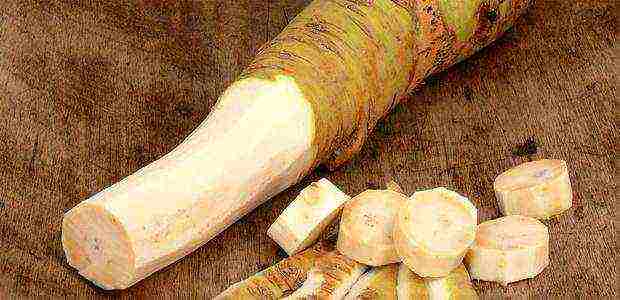
Three-year-old katran has a coarser root vegetable, dark brownish-black skin color. The flesh of the fruit is white. It is a non-expanding pod, in the apical part of which there is a brownish seed. The fruit is spherical, 3–6 mm in diameter. It is the seed because it is difficult to separate the seed from the tightly shriveled walls of the pod.
Katran does not like acidic soils. The best predecessors for him are legumes, potatoes, early ripening vegetables. After it, all vegetables grow well except cabbage. With the correct planting of the katran, caring for the crop consists mainly in loosening the soil and making mineral dressings.
The plant is not demanding on moisture, since its rhizome can feed from the deep layers of the soil. However, it is still necessary to water it. Katran loves, open areas are allocated for him. For better leaf development, crops must be thinned out and weeds must be destroyed.
Katran is not afraid of cold weather, its seeds germinate at + 3–4 ° C, seedlings do not freeze at –5–6 ° C. But large and strong plants are obtained at a temperature of plus 20-25 ° C.
Planting katran seeds and caring for crops
Katran is grown in several ways. In the southern regions, it is propagated by seeds as an annual and biennial plant. However, it is possible to plant seedlings, taking into account the harvest in the second year. You can get it in winter, sometimes by forcing. Planting katran seeds and caring for crops should be carried out according to the rules of agricultural technology.

Seeds of katran are sown in the ground before winter - in late September - early October. They are pre-prepared. 90–100 days before sowing, they are soaked in water at a temperature of 18–20 ° C for 2 hours. Then they are mixed with wet sand, the amount of which should be 3 times more than the seeds. Together with the sand, the seeds are placed in a wooden box 20 cm deep into the ground.
The soil is well dug up. You can add compost from household waste, raw chicken droppings to it.
Seeds are sown to a depth of 2-3 cm, and with spring sowing - 1-1.5 cm. If planted before winter, seedlings appear immediately after the snow thaws. They look like cabbage shoots. When 2 leaves appear, the katran can be transplanted if necessary, but it should be borne in mind that part of the root may be damaged.
After the emergence of shoots, the katran should be protected from cruciferous fleas by dusting it with dry ash or spraying it with infusion.If katran is grown as a two-year crop, thinning must be carried out, leaving 35-50 cm gaps between plants.
A week after thinning, the first fertilization is given with mineral fertilizers, primarily nitrogen fertilizers (30 g of complete mineral fertilizer per 1 sq. M). The second time the katran is fed when it has 3-4 leaves, the amount of fertilizer is reduced by 2 times. Top dressing is combined with watering.
The aisles are loosened until the leaves close between the rows.
At the end of summer, measures are taken to combat leaf-eating caterpillars and cabbage whites. Against caterpillars do three spraying (after 10-15 days) with a mixture of 0.1% aqueous extract of superphosphate with 0.5% - potassium chloride. For 10 liters of water, 10 and 5 g, respectively, are taken. It can be treated with infusions and decoctions of insecticidal plants, lipocide - 20-30 g. Leaf-gnawing caterpillars are destroyed by karbofos - 75 g per 1 sq. m or benzophosphate - 60 g.
Katran is harvested at the end of September - October, even in November, digging in the roots with a shovel.
Large root crops with a diameter of 3-4 cm, low-branched, of the same color are selected for seeds. They are planted immediately.
Katran seeds ripen perfectly in any zone. Flowering occurs in the 3rd year. In the southern regions of the black earth strip, Katran blooms in the second year. The most fertile areas are allocated for seed katran, where organic fertilizers can be applied to the soil. They dig the earth well, loosen it before planting. Seeds are sown in lines. Thinning of seedlings is done at a distance of 20-25 cm. In autumn, seed katran is dug to a depth of 30 cm.
If the seed katran is left to winter, then in the early spring the soil is loosened, the plants are fed, and protected from pests and diseases. The seeds are harvested when the pods are 65–67% brown.
How to plant katran grass from cuttings
You can grow katran grass by cuttings. They have thin lateral roots 20–25 cm long and more, with a diameter of 0.5–1.0 cm. This requires a deep digging. Cuttings are planted in the fall, under a peg. Before planting a katran, it is imperative to distinguish between the upper and lower ends of the cutting. Growing katran by cuttings is a productive way, but it is more suitable for the southern regions of the Black Earth Region. In the northern part of the zone, they are trying to grow katran seedlings, which are obtained in the greenhouse plots. When the seedlings emerge from the cuttings, they are thinned out at a distance of 20 cm. The main thing here is protection from cruciferous fleas and watering.
Seedlings are planted in the 4–5 leaf phase, approximately 40–50 days after sowing the seeds. The length of the root at this time is about 20 cm. Its end must be pinched off. Seedlings are planted under a peg 25 cm long. A short root and shallow planting are unfavorable for a good harvest. The crop is obtained in the second year after transplanting.
Forcing katran
Obtaining katran by distillation method. In protected ground, root crops are taken 18–20 cm long and 1–2 cm in diameter. They are planted in the ground in grooves at a distance of 20–25 cm from each other. The roots are set obliquely and almost end-to-end. The soil is well watered and covered with a loose layer of soil. The thickness of the layer is 18–20 cm. The temperature in the room for distilling the katran should be at least plus 15–18 ° C. Illumination does not play a big role. The moisture content of the soil and air must be monitored.
Root crops are dug up when leaves begin to appear above the surface of the soil.
Horseradish - the root crop is necessary, especially in the harvesting season. But he is very aggressive, and when it grows, it is oh so difficult to get rid of him.
You pull it out, dig it out, but horseradish comes out from everywhere as if nothing had happened, capturing more and more new territories.
And here is his relative katran not like that. He behaves decently.
Katran (lat. Crambe) the site does not litter and behaves not like a weed, but like a cultivated garden plant. In addition, it is juicier, tastier, richer in chemical composition.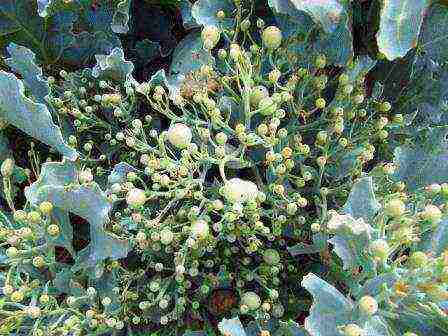
At katran fleshy juicy roots, cylindrical or conical, depending on the grade. The roots of the katran in the first year of life, although small, can be eaten, but still wait until next year.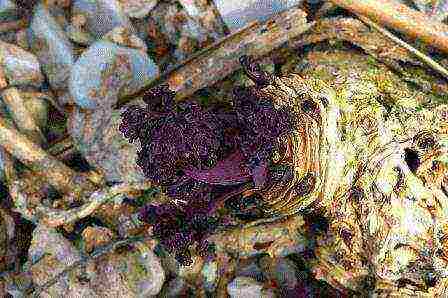
Seeds it is better to sow before winter so that they undergo natural stratification. You can sow katran in the spring, but the seeds must be held in the sand in the freezer.
Another way to speed up planting is to grow katran seedlings. But only stratified seeds are suitable for this.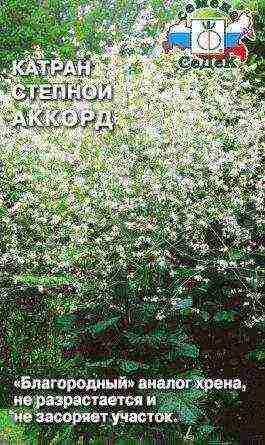
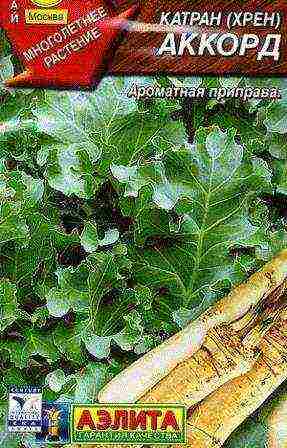

Any soil is suitable for katran, except for acidic and waterlogged. Legumes and grains are excellent precursors. Katran should not be planted after cabbage, radish and radish (so as not to get sick with keel).
The seeding depth is 2-3 cm. The distance between young plants is 15-20 cm, for adults it doubles. The distance between the rows is 60-70 cm.
At first, the plant develops slowly and needs special care. It is important that he is not oppressed by his neighbors.
On rainy days, you need to make sure that the katran does not get wet.
On lean soils, top dressing is necessary, best organic. If a soil crust occurs, the aisles must be loosened to a depth of 4-5 cm and mulched with peat.
Experienced summer residents, in order to increase the yield of katran, in the spring, dig up the soil from a two-year-old plant, cut off the upper part (head) of the root crop, disinfect it with ash and fall asleep again. Instead of a seed peduncle, a leaf rosette develops, the formation of the ground part of which requires less nutrition, and the root gains mass faster.
When planted with seeds, katran rhizomes reach a weight of 200-300 g by the fall of the second year. If seedlings were planted, then you can get an acceptable harvest in the first fall.
For the winter, the plants are left in the ground, the root collar is only lightly sprinkled with earth.
Author - H. Nikitin
09.06.2017
An interesting vegetable culture, little known in our country and therefore not too widespread - katran (lat. Crambe, Cabbage family). This perennial herb has a number of positive qualities and therefore deserves more attention from vegetable growers. Of its numerous species existing in the wild (up to 36), the most widespread are: steppe, eastern or Tatar katran; katran seaside; Abyssinian katran (grown as an oilseed and fodder crop) and cordial katran (used in garden design for border plantings).
Among the indisputable advantages of the plant is its unpretentiousness to soils and care conditions, as well as sufficient heat, drought and frost resistance. Although the natural habitat of katran is a subtropical zone (Mediterranean, Black Sea coast, Central Asia, Africa), today it is successfully grown in many countries of Asia, Europe, North Africa, and in the arid regions of North America, plantations of this crop occupy significant territories.
The main purpose of katran is food. It is cultivated mainly as a spicy vegetable plant. Both leaves and roots are rich in pectins, inulin, salts of potassium, calcium, iron, magnesium, vitamin C. The core root (root vegetable) of katrana is very close in its productivity, taste, constituent substances and nutritional value, and even somewhat surpasses the root well known to us horseradish. The root vegetable katrana is more juicy, has a pungent spicy taste, close to horseradish and radish. It contains vitamins (C, group B, PP), minerals, protein, sugars, trace elements (including a significant amount of phosphorus and potassium), essential oils, phytoncides and has healing properties.
Katran root is used raw and as a seasoning for pickles, marinades, canned food. It is also known as an additive to sauces, cold meat and fish dishes, snacks. They are often substituted for horseradish in cooking. Young leaves and bleached stalks of katran are used for food as asparagus, they are used in salads.In the spring, during the period of vitamin deficiency, the shoots fried in oil serve as an excellent restorative and restorative product. In folk medicine, katran has long been used as an antibacterial, antiviral, antiscorbutic, wound healing agent. They use it to increase appetite, improve digestion, as a substitute for mustard plasters (root vegetable gruel). Contraindications include individual intolerance, chronic diseases of the liver, kidneys, digestive tract (colitis, gastritis) and peptic ulcer disease.
Katran is well known not only as a spice and vegetable crop. The vegetative part of the plant is valued in animal husbandry as a nutritious feed for large and small livestock, and its seeds, containing up to 45% fatty oil, serve as raw materials for the production of technical oil, wax, various fuels and lubricants. Another interesting property of katran: its leaves contain substances that stimulate plant growth.
In the first year of its development, katran forms a rosette of large bluish-green leaves (4 - 5 pcs.), Similar to cabbage leaves. They can be used raw to make salads. Also, the plant forms a powerful taproot. By the second year, the number of leaves increases to 14 - 17 pieces, and the root crop reaches significant sizes (up to 4 - 7 cm in diameter and up to 0.3 - 0.6 m in length). It has an even, cylindrical shape, it can reach a depth of 1 m, it is covered with a thin brown skin on top, and its pulp is white, juicy, spicy, slightly sweetish in taste. The weight of an adult root crop is about 1 kg or more.
The flowering of the culture occurs in the second or third year of life, when the plant throws out thin, long peduncles up to 80 - 125 cm high. Katran belongs to the valuable melliferous crops. Its white, fragrant buds, composed of small, four-petalled flowers, attract many bees and other insects. The katran fruit is a dicotyledonous pod with one spherical seed inside.
Cultivating a culture is easy. In addition, unlike horseradish, katran does not grow over the site and does not clog the beds. Needs good lighting and does not tolerate waterlogging, stagnant groundwater. From soils, it prefers fertile, loose, light (loam and sandy loam). Acidic soils are not suitable for katran, as they contribute to the occurrence of diseases (cabbage keel, black leg, etc.), therefore, it is necessary to lime such a site first (100 - 300 g / m2 of fresh lime and 300 - 500 g / m2 of wood ash). Cucumbers, tomatoes, potatoes, and eggplant are most favorable as precursors.
Katran propagates by seeds and vegetatively (by basal cuttings or root segments). For its sowing, the largest seeds are selected, the size of a pea. This increases the chances of their germination. Due to the rather strong shell, the seeds need to be stratified. It can take place naturally (in the case of pre-winter sowing) or forcibly (in the case of spring sowing).
The most convenient way to seed planting is in the fall. To do this, in October-November, katran seeds are sown in a row, to a depth of 3 cm, at the rate of 10 - 12 pcs. for each running meter, with a row spacing of 70 - 90 cm. In the future, seedlings are thinned out, taking into account the size of adult plants. So that they develop normally and there is no thickening of the planting, the distance between the bushes should be at least 60 - 70 cm. Caring for the plantings consists in regular loosening of the soil, weeding and thinning (if necessary). To protect the seedlings from the cruciferous flea, they practice joint planting of katran and lettuce. In winter, the aerial part of the plant dies off, but in the spring new shoots and leaves appear.
Katran root crops are distinguished by good keeping quality.Already at the age of two, they reach marketable ripeness, although the largest yield is given by three-year-old plants (up to 3.5 kg / piece). The roots are carefully dug, cleaned of the ground and dried for several days under a canopy. They are stored in the basement, in boxes, sprinkling the roots with sand, or in the refrigerator, in a paper bag.
Of the most common plant varieties, the zoned variety "Katran Krymsky" can be called. Also quite popular katran "Picadrom", "Accord" and others.


